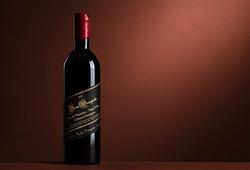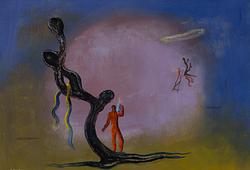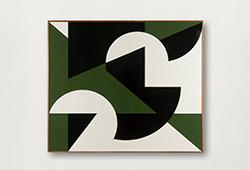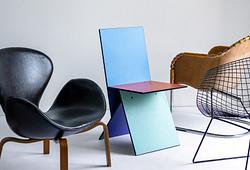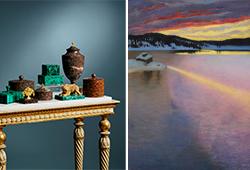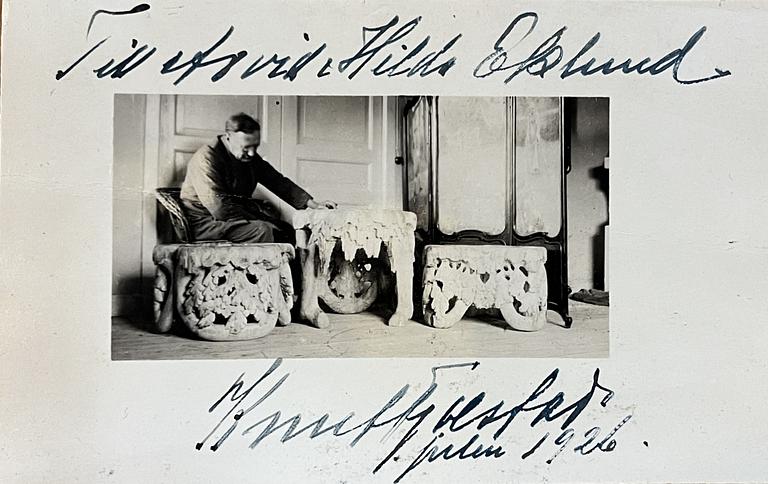Knut Fjaestad
an Art Nouveau sculpted and carved pine chair, Sweden, 1915.
Carved decoration of pine cones and branches, loose seat cushion with brown leather, signed FJÄSTAD and with an inscription under the seat "Sommaren 1915 till Hilda af Knut F" (Summer 1915 to Hilda af Knut F). Height 72 cm, width 50 cm, seat height 46 cm.
Dry cracks.
Provenance
A gift in 1915 from Knut Fjaestad to Hilda Eklund, Skönnerud.
Thence by descent to the present owner.
A postcard addressed to Hilda and Arvid Eklund from Knut Fjaestad at Christmas 1926, as well as a photograph of Fjaestad, accompanies this lot.
Designer
Knut Fjaestad (1860-1937) was an older brother of Gustaf Fjaestad. Throughout his adult life, Knut sculpted in pine during his free moments. Of the originally five children in the Fjaestad family, Knut was the second oldest and Gustaf the youngest. The father was born in Norway and trained as a shoemaker in Paris. Upon returning to Sweden, he settled in Stockholm and became the royal shoemaker to Queen Desirée. The shoemaking business had as many as thirty employees at its peak.
Eventually, Knut had a property purchased in Gamla Stan, on Västerlånggatan, where he initially both lived and opened a sewing studio - a clothing store/fashion shop. In 1907, Knut and his family bought a house at Skärsätra Gård on Lidingö, a 17th-century property that he carefully renovated. His wife passed away as early as 1912.
In the 1920s, Knut Fjaestad started a company for wine production from Swedish berries and soon became a Royal Court Supplier. They produced both red wine and Madeira-style wine. The wine was called "Bjälbo-tappning," and the production was very successful, but with the outbreak of World War II and the subsequent sugar shortage, they were forced to cease production.
Knut Fjaestad remained loyal to Lidingö for the rest of his life and continued to live in the same house. Alongside his significant entrepreneurial ventures, Knut seems to have loved to sculpt and carve in wood during his free time, primarily in pine.
Knut and his brother Gustaf Fjaestad were close, and it is difficult to say which of the brothers initially began to sculpt the furniture in the distinctive, naturalistic Art Nouveau style that both brothers worked in. The earliest known stabbestol (a type of chair) by Gustaf Fjaestad is dated 1894 (Bukowskis Moderna catalogue 553, catalogue no. 709, October 2009).
It was likely Gustaf Fjaestad who inspired Knut. After 1907 and the move to Lidingö, Knut certainly had greater opportunities to work on his sculpting with his own workshop on the estate, something he continued throughout his life, primarily in the form of various types of furniture. His masterpiece, a throne chair in fully developed Art Nouveau style, took him as long as seven years to complete.
Read more



